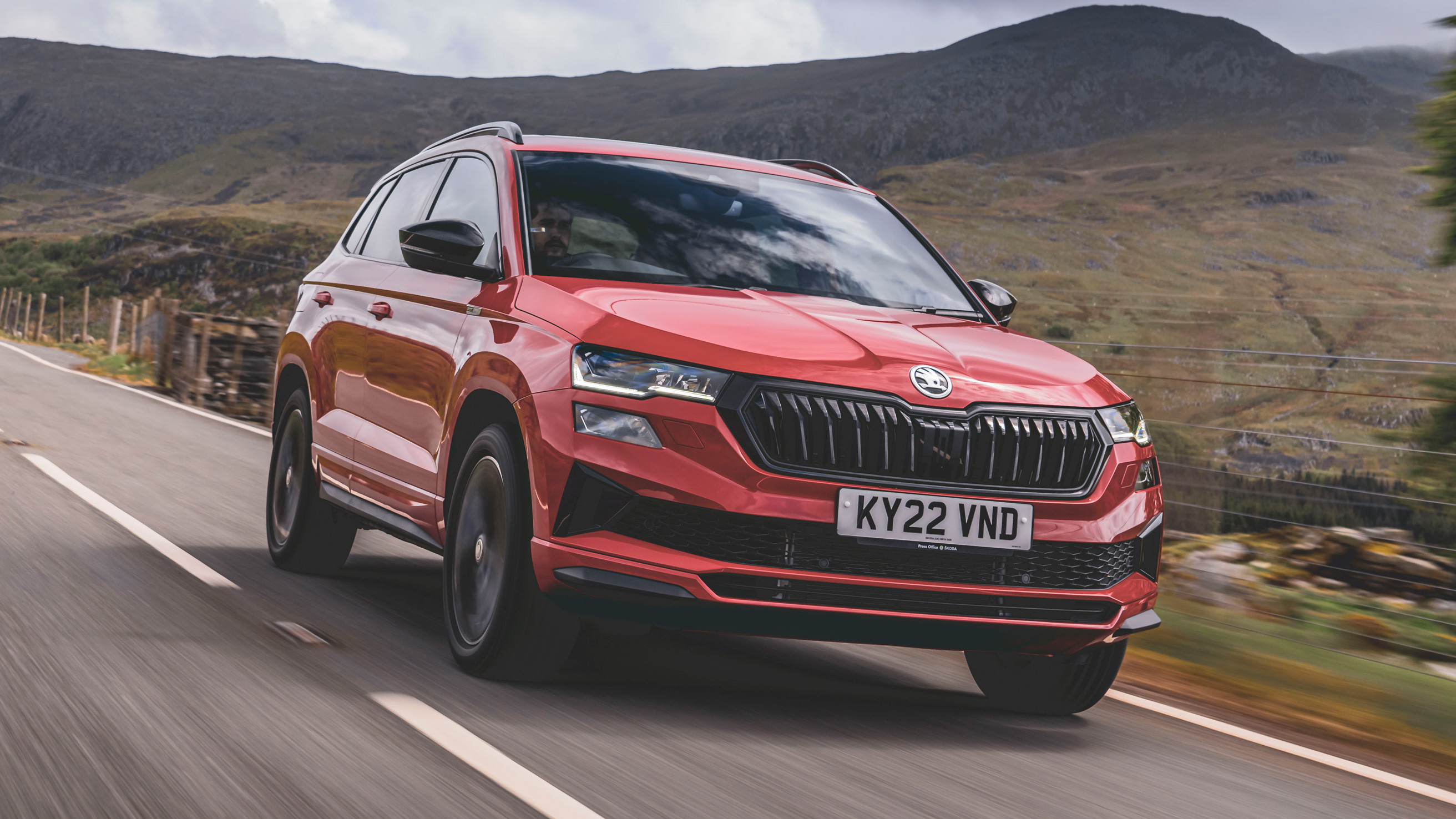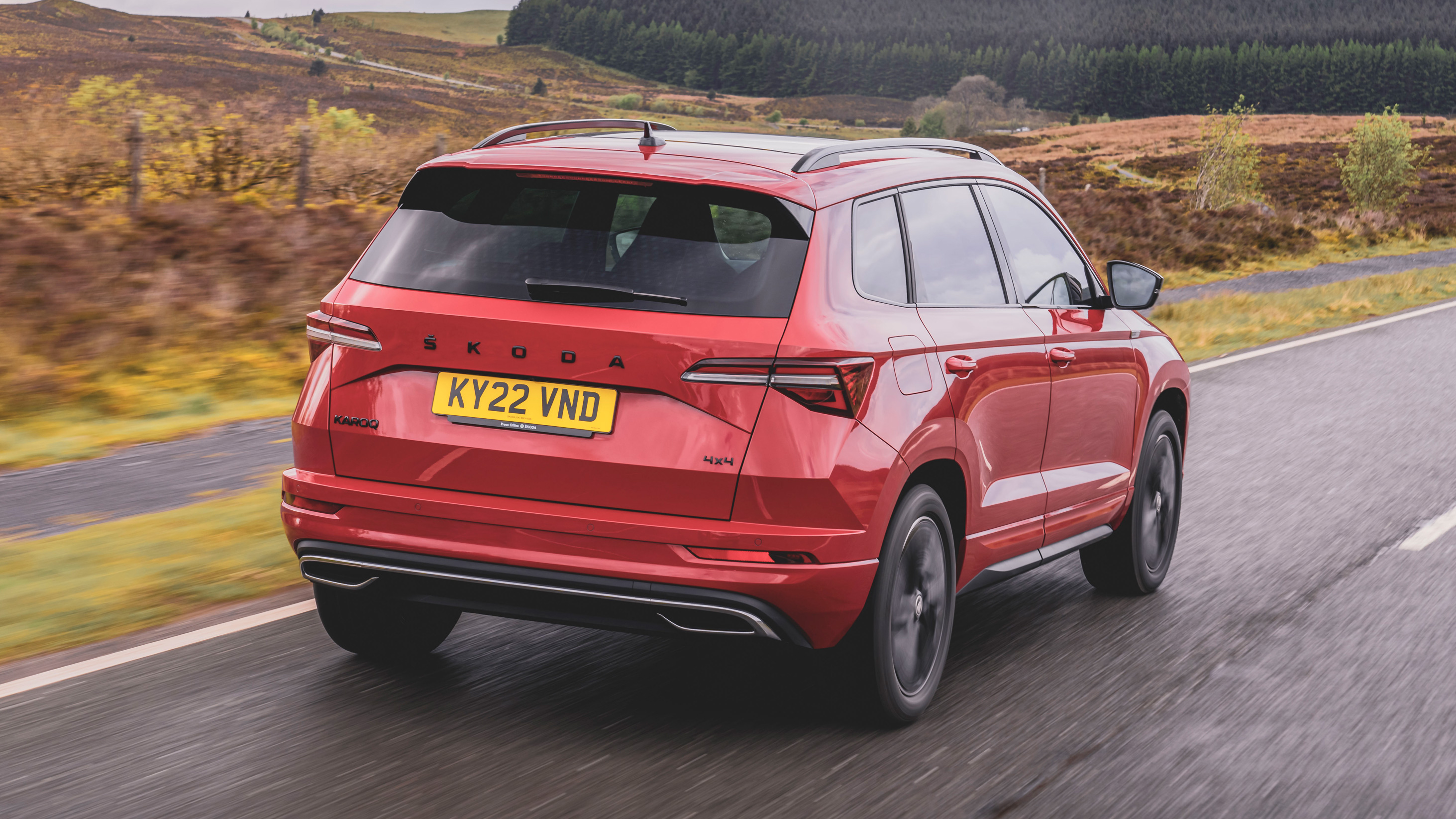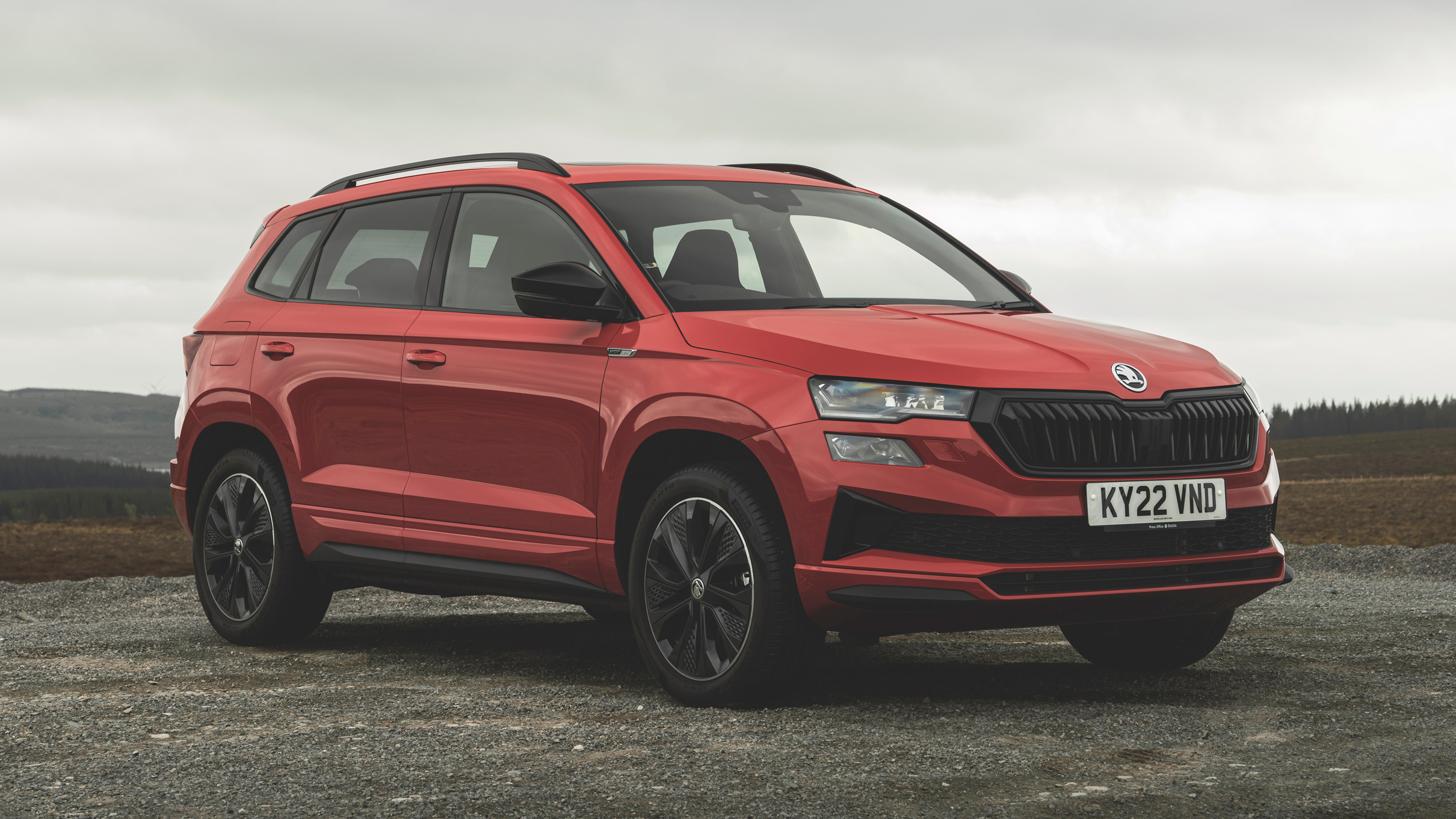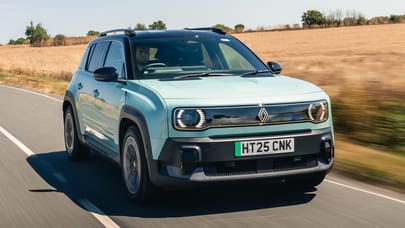
Good stuff
Decent quality, lots of room, offers plenty of value for money
Bad stuff
Very little of note, besides not being very interesting
Overview
What is it?
Between the seven-seat Skoda Kodiaq and the entry-level Kamiq, Skoda offers up the Karoq. If you’re at the dealership, it’s not the big SUV and it’s not the little one, but it does have exhaust pipes so you don't confuse it with the electric Elroq.
The Karoq's been on sale since 2017 and got a facelift in 2022. High time it was replaced then, except it's still ticking over just fine and so Skoda has no plans to fix something that ain't broke.
It's a slightly anonymous midsize crossover which shares its building blocks with the stalwart Seat Ateca (they’re built in the same factory) and, along with the Seat, it competes with the Nissan Qashqai and a million other cars like it.
It’s a tough part of the market to fight in – the Peugeot 3008 is more stylish, the Citroen C3 Aircross is cheaper, the Dacia Duster is both and the Volkswagen Tiguan has a badge with more status.
What have I got to choose from?
There are three trim levels to pick between – the SE, SE L and the bodykitted Sportline with its racy seats and black detailing. Engines comprise a 1.0-litre turbo three-cylinder, 1.5-litre four-cylinder and 2.0-litre four-pot petrol (the 1.0 is manual only, the 2.0 petrol DSG auto only) and a 2.0-litre 4x4 DSG turbodiesel.
Not all the engines are available across all the trims, but if we spell it all out we'll be here forever. Only the weediest units are available on the entry SE trim; only the biggest powerplants are available with the Sportline badge.
What are the engines like?
The entry level 1.0-litre petrol is a thrummy 3cyl VW Group character actor, appearing in the background of most of the outfit’s productions, offering 114bhp/148lb ft, 0–62mph in 10.3 seconds and fuel economy of 48.8mpg.
The 1.5 petrol pumps out 148bhp/184lb ft, does 0–62mph in 8.9s and offers a slightly less economical 47.5mpg, while the largest of the petrols – the 2.0 – comes with 187bhp/236lb ft and manages the 0–62mph run in a perky 7.0s. Fuel economy dips to 37.0mpg though.
The 2.0-litre diesel is still plugging gamely on although it's no longer quite as smooth and refined as it used to be. But the Germans are still buying them and that’s what’s important. That 148bhp/266lb ft bad boy does 0–62 in 8.7s and offers 48.9mpg. The one you want for big miles.
We most recently drove the 2.0 petrol and got 33.6mpg over a couple of hundred miles on mixed roads. A below par return for a small SUV, albeit in the ballpark of what you'd expect from a non-hybrid.
Is there anything interesting about the Karoq?
Interesting is such a strong word, but if you're familiar with Skoda's built-in car park ticket holder and ice scraper in the fuel filler flap then you might struggle for true surprise and delight. Although getting your passengers to try and find the umbrella is a fun party game – it’s not in its usual door cubby.
What’s remarkable about these features is that even the things that might seem gimmicky (the tiny bin that clips into the door pocket, for instance) will be useful to someone. All Karoqs come with tablet holders as standard on the back of the front seats – proof the designers actually have families of their own.
How’s the drive?
The Karoq gets the job done well, but with no hijinks along the way – it’s like a small family dog that'll walk to retrieve a stick rather than chase it. The drive has a pleasant old school feel, mainly because the Karoq has declined that newfangled hybrid nonsense in order to remain relatively light (1.4 to 1.8 tonnes) and uncomplicated.
The throttle is very hesitant, even on the powerful petrol car that we drove, needing a good hoof to get going in everything but Sport mode. Which just made it skittish. The ride is pliant over the UK’s potted roads, though if you try and push the car too hard it devolves into bounciness. Again, Sport mode with the DCC adaptive suspension fitted (only available on the Sportline models) is nice and taut, but far too firm for everyday driving.
That said the handling is surprisingly game, the Karoq tipping sharply into corners and clinging grimly on. It stops short of being genuinely enjoyable, but if it’s just you in the car and you want to press on, you can.
And how much would one pay for a Karoq?
Prices start at £30,670 and work their way up to a dizzy £43k. Modern world, huh? Get yourself over to the Buying section of this review for a full financial run-through.
Our choice from the range

What's the verdict?
There’s nothing particularly flash about the Karoq, but it’s a sturdy, dependable and well thought through car that will go about family life in a faithful and fuss-free way without any major gripes or annoyances. We very much like it overall, it's just sometimes a bit tricky to remember exactly why.
Occasionally losing it in a car park is a worthwhile price to pay for the sort of everyday usability that’s been lost in a lot of the more fashion forward crossovers of late. Plus if you’re squeamish about electric cars, Skoda appears to be flying the flag for combustion power until the pole gets sawn down.
The Rivals
Trending this week
- Car Review
BMW iX3










